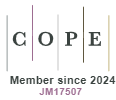Management and outcomes of retained placenta at a provincial hospital in Papua New Guinea: a retrospective observational study
John Kukiti A , Ian Umo B * , Alice Siwawata A , Rodney Talo A and Grace Kariwiga AA
B
Abstract
Retained placenta is a significant cause of postpartum haemorrhage and is a major contributor to maternal death. It is defined as the retention of the placenta 30 min after the delivery of a foetus. Milne Bay Province contributes to the high maternal mortality rate of Papua New Guinea. Between 2014 and 2022, 35% of maternal deaths at the Alotau Provincial Hospital were due to retained placenta. This study aims to describe the management and outcomes of mothers presenting with retained placenta to the Alotau Provincial Hospital.
This was a retrospective study conducted over 8 years to investigate the management outcomes of retained placenta in a provincial hospital of Papua New Guinea.
A total of 13,731 deliveries took place at the Alotau Provincial Hospital between 1 January 2014 and 31 December 2022. The incidence rate of retained placenta was 1.9%. Complete data were available for 180 of these cases, and they were analysed further. Active management of the third stage of labour was performed in 128 cases (71%). Manual removal of the placenta without anaesthesia in the hospital’s labour ward was successful in 51% of cases. The duration of the third stage ranged from 30 min to 16 days, with 45% (n = 82) of cases resolving within an hour. Postpartum haemorrhage occurred in 69% (n = 124) of cases, while 51% (n = 63) of patients experienced severe postpartum haemorrhage and hypovolemic shock. The sepsis rate was 20% (n = 36), and the maternal mortality rate was 0.6%.
This study highlights the substantial burden of retained placenta at the Alotau Provincial Hospital. Despite an increase in supervised deliveries, most emergency cases of retained placenta stem from unsupervised village births, often complicated by postpartum haemorrhage.
Keywords: Alotau Provincial Hospital, maternal mortality, Milne Bay Province, Papua New Guinea, postpartum haemorrhage, retained placenta, supervised delivery, unsupervised village birth.
References
1 Cheung WM, Hawkes A, Ibish S, Weeks AD. The retained placenta: historical and geographical rate variations. J Obstet Gynecol 2011; 31(1): 37-42.
| Crossref | Google Scholar | PubMed |
2 GBD 2015 Maternal Mortality Collaborators. Global, regional, and national levels of maternal mortality, 1990-2015: a systematic analysis for the global burden of disease study 2015. Lancet 2016; 388: 1775-812.
| Crossref | Google Scholar | PubMed |
4 Mola G, Kirby B. Discrepancies between national maternal mortality data and international estimates: the experience of Papua New Guinea. Reprod Health Matters 2013; 21: 191-202.
| Crossref | Google Scholar | PubMed |
5 Barss P, Misch KA. Endemic placenta accreta in a population of remote villagers in Papua New Guinea. Br J Obstet Gynaecol 1989; 97: 167-74.
| Crossref | Google Scholar |
9 Ganle JK, Kombet ML, Baatiema L. Factors influencing the use of supervised delivery services in Garu-Tempane District, Ghana. BMC Pregnancy Childbirth 2019; 19: 141.
| Crossref | Google Scholar | PubMed |
11 Bolnga J, Morris M, Totona C, Laman M. Maternal near-misses at a provincial hospital in Papua New Guinea: A prospective observational study. Aust N Z J Obstet Gynaecol 2017; 57: 624-9.
| Crossref | Google Scholar | PubMed |
12 Weeks A, Mirembe F, Alfirevic Z. The Release Trial: a randomised controlled trial of umbilical vein oxytocin versus placebo for the treatment of retained placenta. BJOG 2005; 112: 1458.
| Crossref | Google Scholar |
13 Tanimia H, Jayaratnam S, Mola GL, Amoa AB, de Costa C. Near-misses at the Port Moresby General Hospital: a descriptive study. Aust N Z J Obstet Gynaecol 2016; 56: 148-53.
| Crossref | Google Scholar | PubMed |
15 Lokuge K, Wemin F, Joshy G, Dl Mola G. Evaluation of an obstetric and neonatal care up skilling program for community health workers in Papua New Guinea. BMC Pregnancy Childbirth 2024; 24: 357.
| Crossref | Google Scholar | PubMed |


